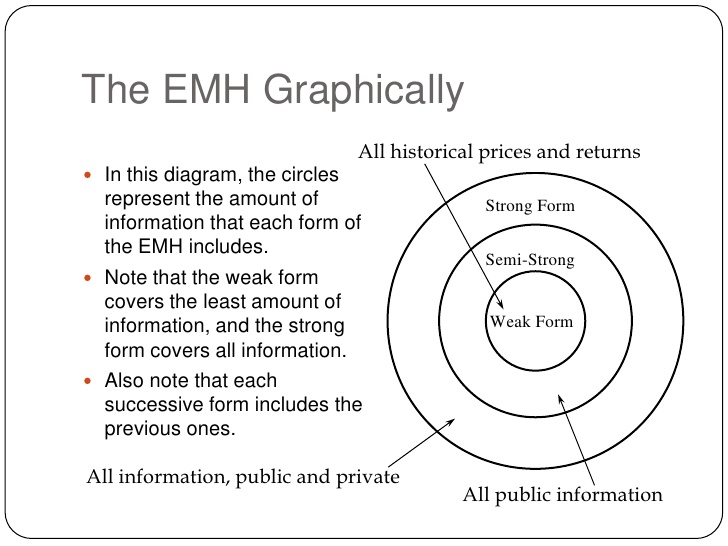…and inefficiently efficient.
As I was diligently (not) watching CNBC today, I overheard that Enron legend and one of the best hedge fund traders ever, John Arnold, was going to make an appearance. CNBC heads would ask Arnold the redundant questions they ask everyone from Arnold to NBA star James Harden; interestingly enough, this proved the case as Harden made an appearance minutes later. Anyway, as CNBC went through the motions with banter and questions beat to a bloody pulp, Arnold played his legendary role to a tee. When asked about the mutedness (maybe not a real word) of the stock market’s daily moves, he responded with the simple but profound statement that asset prices should not change as often as they do. Investors find it “normal” when the stock market as a whole moves 1-2%…or even 3% on certain days. Never mind the WTF 22% of Black Monday. But the fact is, on a daily basis, there is no reason that prices of assets, or individual companies, should be fluctuating so wildly. So, the main question stemming from John Arnold’s comment is whether the lack of volatility and more consistent asset prices are a sign of markets becoming (more) efficient?
When Arnold mentioned how asset prices should not change so frequently, it brought me back to an underlying principle of asset pricing which I’ve all but forgotten: my very first interpretations of the stock market. Years ago, when first learning about financial markets, I couldn’t get over how stock prices fluctuated every single day. This was long before I understood the difference between price and value (Buffett quote – price is what you pay, value is what you get). Even more specifically, prices fluctuate so often because buyers and sellers must arrive at a single price (which represents underlying value) to transact. Sometimes there are more buyers than sellers and vice versa. [Side note, “more buyers than sellers” and vice versa is the only correct answer to “what happened in the markets today?”] Theoretically, combining Arnold’s statement that prices of assets should not fluctuate as often as they do + the fact that prices are in a state of continuous flux = proof that markets are inefficient….right? We’ll leave the question to your imagination, especially because flux is continuous by definition. Personally – as a microcosm of market efficiency – I interpret this as a preliminary/topical sign that markets are inefficient.
Let’s go from that (arguable) baby step, skip everything in between, and take it to the grave with a side of George Soros’s reflexivity, algo computer trading, and some mind-fluxing. Stock price flux, better known as market volatility, has been very low this year. “Inexplicably low” is how Bloomberg and CNBC guests and anyone slick/smart enough to avoid answering the question might say. On that note, let’s make a bad decision and answer this question. Volatility of stocks is created and subdued by lack of liquidity and abundance of liquidity, respectively. That is to say, liquidity is not one of the reasons of market volatility, it is the only reason. You might want to say Fed decisions, earnings, Al-Qaeda, ISIS, any news, etc etc. also create volatility. If you do say that, then it’s similar to answering the question of what causes a thunderstorm by explaining how clouds and low/high pressure systems collide….and so on. Instead of the complicated scientific explanation of t-storms, we’ll answer that question with one word – nature. Nature explains rain, snow, thunder, lightning, blizzards, etc etc etc. Boom, nailed it. Liquidity explains volatility. Boom.
Before we describe how volatility is dictated by liquidity, let’s define it. Liquidity is the continuity of buyers transacting with sellers, and vice versa. This is not to be confused with the number of transactions between buyers and sellers, which is volume. Liquidity is the presence and ability of both buyers and sellers to transact at any given time. So you can have a liquid environment with low volume, and with high volume. The absence of buyers and sellers is just low volume, but there isn’t necessarily anything to conclude about liquidity or volatility. The Friday before a long weekend, for example, commonly shows low volume with low volatility. But if you throw in low liquidity, then the volatility would spike. Liquidity does have a cause and effect relationship with volatility, but it’s not so clear which comes first.
Let’s describe by taking a look at a stock before and after company earnings. Before earnings, a stock’s price is relatively “less volatile” because buyers and sellers are arriving at similar prices when information is accounted for and public. Prices to buy and sell, bids and offers, are very tight. One buys FAKE stock at $21.43 and another sells at $21.42, $21.43, $21.44, so on and so forth. Once earnings are released, buyers and sellers need time and a margin of safety to process this information, so bids and offers diverge. Buyers bid $21.00 and sellers offer FAKE at $22.00. Neither is certain where FAKE will trade in the coming few minutes, let alone days. They need to buy much lower and sell much higher to make sure they don’t lose money. Buyers and sellers are far apart from transacting, so there are no trades and markets diverge even more. That’s lack of liquidity. That’s liquidity drying up like the basketball court after Patrick Ewing hits the locker room – https://www.youtube.com/watch?v=43qRB52KTM4. Accordingly, abundance of bids and offers and high liquidity lead to smoother “pricing” of FAKE and lower volatility.
Hopefully now you can envision the stock market’s “inexplicably low” volatility as a product of abundant liquidity. Big deal though, who cares? It seems anti-climactic, but we’re not finished. Going back to John Arnold’s comment of low volatility making sense because asset prices shouldn’t fluctuate day to day – does that mean that markets have magically become efficient, or at least more efficient now? Or does it mean that this is…or is not the calm before the storm? Let’s get one thing right, the calm before the storm is not a profound thought, nor is it anything more than a definition of a storm. Just as there is no dark without light and love without hate, there is no storm without calm. If it was storming all day and it was never “calm,” you might change the definition of “calm” to storm and “storm” to hurricane. That isn’t “calm” as we know it. So to all those people saying this is the calm before the storm, every time you say that and there is no imminent storm, you are dead wrong. Dead wrong with your buddies that predicted 8 of the last 3 recessions. It is always calm before the storm. If it wasn’t calm, then it would already be storming. That concludes the “calm before the storm” rant…
So does lowered market volatility imply more consistent asset pricing, and therefore more efficient markets? I say no, actually the complete opposite. Flash crashes and algo disasters have exposed market inefficiencies with 5-10% or even higher moves in a matter of seconds. At the same time, algorithmic trading provides a huge amount of liquidity to avoid the very volatile market inefficiencies it has caused in the past. It’s my belief that a lack of tangible news affecting stock prices + billions in algo-trading volume to book profits tinier than a fraction of a cent per share = tangible proof that previous inefficiencies of markets have been cured by more inefficiencies of algo-trading/HFT. High Frequency Trading (the most well-known form algo-trading) accounts for a majority of daily equity trading volume. This is a vicious circle, reflexivity of sorts, where inefficiencies cure inefficiencies. In other words, 2 wrongs – volatile asset prices + algo-trading – make a right. As mom and dad might have told you, this doesn’t work for long.
HFT accounts for billions of shares traded in tiny fraction of a cent/share increments. As a byproduct, HFT commonly ensures that bids and offers do not diverge as they did in our FAKE example. This presence/appearance of additional liquidity and increased market efficiency, has proven to provide exactly the opposite during the Flash Crash and similar blips. In effect, with the lack of substantial news and events, algo-trading/HFT, has provided markets with tighter and deeper bid/offer markets, and therefore more liquidity. It has yet to be seen how the liquidity provided by algo-trading reacts when there is significant news though. For now, live and die by HFT. We ride together, we die together, HFT for life. Bad Boys
In conclusion, my unsuspecting and ill-informed 18-year-old self would love to believe that markets have become (more) efficient. It seems like a dream come true, therefore, I’d have to assume it’s far from it. I’d also assume that John Arnold deflected the lowered market volatility question by mentioning the ideal that asset prices should not fluctuate day to day. It’s like someone responding to “it’s a beautiful day,” with “enjoy it.” Brilliant way to answer a CNBC question. Enjoy the inexplicably low volatility while it lasts.
Takeaways:
- Theoretically, asset prices shouldn’t fluctuate on a daily basis. The fact that they do is proof that markets are not so efficient.
- It is a real possibility that asset price fluctuations (volatility) might be lowered due to another inefficiency – algo trading/HFT . Two inefficiencies creating efficiency – a vicious circle of reflexivity.
- Liquidity and lack thereof is the source of this volatility, and lack thereof at times.
- There is calm before every storm. So, enjoy lower volatility while it lasts.




You defined liquidity as the continuity of buyers transacting with sellers (and vice versa), and volume as the number of transactions, then how is “The absence of buyers and sellers just low volume…”?
First and foremost – the absence of buyers and/or sellers is an indicator of low liquidity. There can be high volume in low liquidity (think of flash crash or market bottom in March 2009). Bids and offers are wide apart so prices are moving much faster than “normal.”
Absence of buyers and sellers is not necessarily low liquidity – if there is no volatility along with low volume, you won’t even realize “low liquidity” because the market might have been close to unchanged for the day.
So that means if there’s low volatility, due to an inefficiency like HFT, then an average individual investor would get lower returns since it would take a lot more push to move the markets up in the presence of HFT?
Actually if there is low volatility due to an “inefficiency” such as HFT – that means they are providing markets with liquidity. It wouldn’t necessarily impact returns of an investor in one way or another. If anything, market liquidity is good for trading.